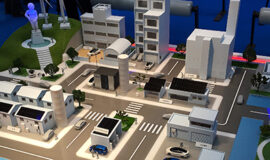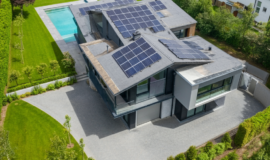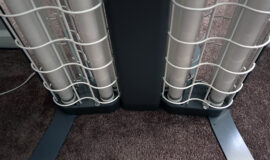Are Building-Integrated Photovoltaics a Good Idea?
Building-Integrated Photovoltaics or BIPV for short, are photovoltaic modules that are integrated into the building envelope as part of the design, be it either the roof or the façade. The BIPV serve a double function – they act as conventional building materials and also serve their original purpose – power generation. A lot of building parts can be replaced with photovoltaic panels such as facades, windows, skylights and roofs.
Standard photovoltaic modules are installed on the roof of a building and require a mounting construction. With the integration of solar modules into the roof, you can omit the hustle of mounting the construction and also lower the investment costs of your PV system. It also adds to the aesthetical appearance of the roof as they look like a designed part of the roof rather than an addition. The PV modules used for roof-integration are frameless and built to withstand outside conditions.
A slight disadvantage is that these types of systems are harder to ventilate and are slightly less efficient than traditional photovoltaic systems because they function at higher temperatures. Also, not every roof is suitable for the integration of panels. With traditional solar panels you have the luxury of adjusting the inclination of the panels while with integrated panels you have to make due with the angle that is available.
Another part of the building which solar panels can be integrated in, is the façade of the building. The façade is what gives us the initial impression of the building. There is a lot of attention to detail put into the creation of the external appearance of the building. Photovoltaic modules can enrich the aesthetic appearance when used as façade elements. They offer a variety of benefits that are related to the design, environment and they also offer economic benefits.
The benefits connected to the design of the building are:
– Heat protection/Thermal insulation
– Safety – They act as a safety glass
– Aesthetic appearance
– Substitution of conventional building materials
– Sun protection as well as noise protection
The economic benefits that come with installing façade integrated solar panels are given in the following section:
– Reduction of costs for infrastructure and maintenance
– There is no need of using the roof space or taking up additional land space for solar panels
– Reduction in supplementary mounting costs and lower building material costs
– Reduction regarding electrical costs
And last but not least, the environmental benefits to integrating PV panels into your façade are:
– Reduced carbon emissions
– Using solar panels results in a pollution-free environment
Of course, there is also a possibility of combining these two types of integrated solar panels aka both into the roof and the façade of the building.
BIPV roof and façade integration can add some benefits to your system relating to product efficiency and external appearance that traditional PV systems cannot. It can also be used as motivation for developers to research new and even better ways of implementing solar energy.





